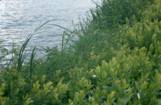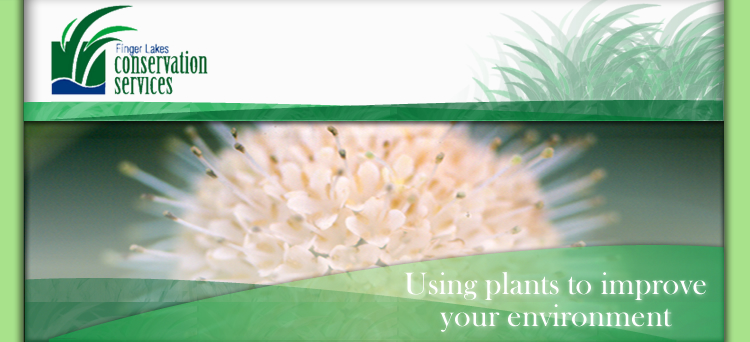Finger Lakes Conservation
Services has experience with:
SOIL
BIOENGINEERING WITH PROVEN PLANT MATERIALS
EROSION REDUCTION
SLOPE STABILIZATION
STREAMBANK STABILIZATION




Soil Bioengineering is a term that encompasses a plant-based
(but engineering influenced) way of creating site stability.
At its core, soil bioengineering relies on developing extensive,
interwoven root structure that is resistant to dislodging by
water or soil stresses. Risk during treatment of stressed sites
is elevated by slow establishment and growth, so quick and effective
plant establishment is key. Establishment speed and reliability
are dependent upon three factors:
1. proven technique
2. proven plant materials
3. quality plant materials
While factors 2 and 3 may seem to be synonymous, they are not. Proven
plant materials are those that have demonstrated success
repeatedly within the region of use and are of known stock-
i.e. they have a track record and a history of source. Quality
plant materials are those that are in prime condition
at the time of planting. It follows directly that the best
sources of plant materials for soil bioengineering are produced
for the purpose with known cultivars grown under controlled
conditions.
In choosing to use a soil bioengineering approach, one recognizes
that site stability is not instantaneous (like dumping rock)
and that plants can be vulnerable to natural occurrences such
as adverse weather, disease, insects, and depredation by animals.
Why then choose a soil bioengineered approach? The
answer, of course, lies in the benefits that come with plant-based
treatment. Plants grow stronger over time, and can self-repair
through new growth after some types of damage. Plants provide
stream shading, up-take pollutants from the stream system,
contribute detritus for stream organisms, create nesting sites
for birds and food for mammals. Plants create travel corridors
for wildlife and connectivity between habitats. Plants help
shape the stream banks for fish habitat and do not contribute
conducted heat to the water. Plants sequester CO2 and release
oxygen to the air while trapping dust and cooling the air currents
that pass through the stream corridor. Plants are widely regarded
as much more attractive than rip-rap, and at locations where
rip-rap is needed the combined use of shrubs will help to soften
or hide the rock. Plants contribute to soil stability beyond
the root strength by removing soil moisture surcharge in the
soil column. Rock provides none of these benefits, and is on
average a more expensive treatment.
Plant diversity can be built into the site treatment by adding
native, desirable species to the planting scheme. The ultimate
goal is to have the local, native species dominate the site once
it is stabilized. The recommended bioengineering species are
eventually dominated by the shade tolerant climax tree species
that are planted with the willow and dogwood shrubs and/or invade
the stabilized site over extended time. We recommend front-loading
this process. See the section on BIOENGINEERING STEMS, CUTTINGS,
AND LIVE STAKES for a listing of plant materials available from
our FLCS nursery.





